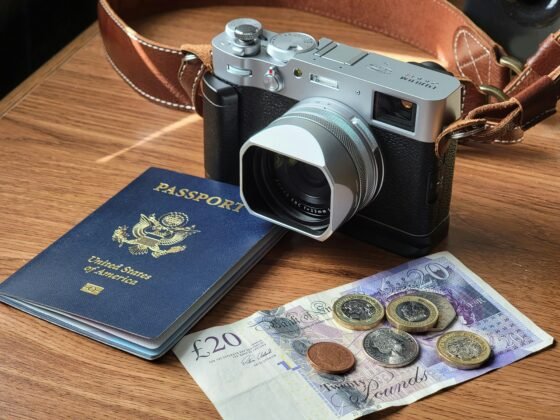There’s something irresistibly enchanting about setting sail on a car ferry. The clamour of the docks, the wave of people and vehicles carefully orchestrated into a sea of anticipation, and the promise of adventure just over the horizon. It beckons to both the seasoned traveller and the wide-eyed explorer.
Whether you’re crossing the channel on the Dover to Calais ferry, gliding over the turquoise waves between Seattle and Orcas Island, or venturing from lively Vancouver to serene Nanaimo, a car ferry can be one of the most enjoyable ways to travel. But before you rev the engine and steer aboard, it’s crucial to know how to pack right for a car ferry journey. Let me be your guide, step-by-step, to ensure a seamless, stress-free voyage.
Onboard Essentials: What to Pack
Traveling on a car ferry has its unique set of needs. While ferry trips can vary greatly in duration (from the quick 40-minute hop from Staten Island to Manhattan, to a relaxing six-hour voyage from Holyhead to Dublin), having the right supplies handy can make all the difference.
Comfort and Convenience
- Snacks and Drinks: While most ferries offer onboard cafeterias and vending machines, prices can be steep and options limited. Packing a picnic of your own is both cost-effective and delightful.
- Warm Layers: Regardless of the season, temperatures can drop quickly on the open water. A cosy sweater or jacket is a must.
- Entertainment: Whether it’s a gripping novel, your favourite podcast, or a travel journal, ensure you have just the thing to keep you entertained.
- Chargers and Power Banks: Remember to charge all devices before the journey and bring power banks for the extra juice. Not every ferry has abundant power outlets.
- Camera or Smartphone: You’ll want to capture those breath-taking views without scrambling for your gear.
Car Comfort
- Pillows and Blankets: The gentle rocking of the ferry can be lullaby-like. Make any car seat nap-ready with a pillow and soft blanket.
- Footwear: A comfortable pair of shoes for walking about the ship is ideal. Avoid flimsy flip-flops, they might not provide the grip needed on a moving vessel.
Restricted Items: Know Before You Go
While ferries are forgiving when it comes to luggage, certain items are typically restricted onboard for safety and regulatory reasons.
Commonly Prohibited Items
- Flammable Materials: This includes gasoline cans, propane tanks, or any hazardous chemicals. Some ferries may allow small propane tanks if they’re for camping stoves, but always check the specific ferry’s guidelines first.
- Weapons: Firearms, fireworks, and other weapons are generally prohibited.
- Pets Without Documentation: While many ferries are pet-friendly, ensure you have the necessary documentation and that your pet is comfortably secured in your vehicle or designated pet areas.
- Excessive Liquids: Unlike air travel, there aren’t often restrictions on regular beverages, but excessive quantities of liquids, especially anything flammable, aren’t allowed.
Keep It Safe, Keep It Secure
- Luggage: While your car can store luggage, ferry operators often recommend keeping valuable items like passports, money, and electronics with you.
- Security Checks: Be aware that security checks can vary by ferry route and country, so it’s always wise to research specific regulations or inquire directly with the ferry company prior to departure.
Before You Board: Logistics and Launching Points
Booking Your Ferry
Planning makes perfect when it comes to ferry logistics. Here’s how you can ensure a smooth transition from land to sea.
- Advance Reservations: Popular routes fill up, especially during peak tourist seasons. Secure your spot in advance. Visit openferry.com to browse schedules, compare prices, and book your tickets seamlessly.
- Arrival Time: Arrive at least 60 to 90 minutes before departure. This gives you time to check in, go through security, and get situated without the stress of rushing.
Getting to the Ferry Terminal
Navigating busy port cities is no small feat. Here are some tips for arriving without a hitch:
- GPS and Maps: Use a reliable GPS or map application to avoid getting lost, especially in larger ports like Seattle or Vancouver.
- Parking: If you’re not taking your car onboard, look into long-term parking options near the terminal.
- Public Transport: Many ferry terminals are well-connected to local transit networks. Check out bus and train schedules that align with ferry departure times.
Once Aboard: Enjoying the Ride
Explore the Amenities
Modern ferries often boast a surprising range of amenities. Depending on the vessel, you might find:
- Food and Drink Options: From casual cafes to formal dining spaces, there’s often a range to suit any palate.
- Shops: Some ferries have stores selling everything from souvenirs to travel essentials.
- Outdoor Viewing Areas: Don’t miss stepping out onto the deck to feel the breeze and drink in the panoramic views.
Safety and Comfort
- Safety Briefing: Pay attention to safety instructions given by the crew. Familiarize yourself with the location of life jackets and emergency exits.
- Motion Sickness: If you’re prone to seasickness, consider taking a preventative anti-nausea tablet before departure. Stick to the middle of the vessel where there’s the least movement.
Conclusion: Setting Sail on Your Next Adventure
Crossing the sea on a car ferry is more than a mode of transportation; it’s an experience to be savoured. With scenery painted in broad strokes of sky and sea, your journey becomes an exploration not just of new places, but also of new ways to see the world.
So, ready the car, pack those essentials, and set your course for discovery. With considered planning, an eye for adventure, and a spirit ready to explore, a ferry journey can be a highlight of your travel tales.
Remember, the horizon is just a start. Book your ferry today on Openferry.com, and embark on a voyage that promises both the charm of the journey and the allure of the destination. Bon voyage!
Image: Unsplash, Peter Mason












